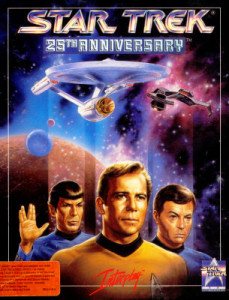The Force Trainer is a Star Wars -themed toy which creates the illusion of performing Force-powered telekinesis. [1]
The brain–computer interface toy, released was Uncle Milton Industries' Star Wars Science line in 2009, comes with a headset that claims to sense the brain's electric fields (similar to an EEG) and relays the signals to a tube that uses a fan to blow a ball into the air. The harder the user concentrates, the harder the fan blows, and the higher the ball is suspended. The voice of Yoda instructs the user on developing their skills. [2]
In a 2010 episode of the College Humor series Bleep Bloop, the hosts Jeff Rubin and Pat Cassels tested out the toy, even having a co-worker, Brian Murphy, play Brain Age, a video game advertised as making you use your brain more, while he had the Force Trainer headset on. [3]
One user of the toy argues that the brainwave effect of the Force Trainer II is fake; if the electrodes are connected directly to each other instead of being worn by the player, the game will proceed to play itself and pass all of the training exercises without any user input. [4]

A computer mouse is a hand-held pointing device that detects two-dimensional motion relative to a surface. This motion is typically translated into the motion of the pointer on a display, which allows a smooth control of the graphical user interface of a computer.

A game controller, gaming controller, or simply controller, is an input device or input/output device used with video games or entertainment systems to provide input to a video game. Input devices that have been classified as game controllers include keyboards, mice, gamepads, and joysticks, as well as special purpose devices, such as steering wheels for driving games and light guns for shooting games. Controllers designs have evolved to include directional pads, multiple buttons, analog sticks, joysticks, motion detection, touch screens and a plethora of other features.

Star Trek: 25th Anniversary is an adventure video game developed and published by Interplay Productions in 1992, based on the Star Trek universe. The game chronicles various missions of James T. Kirk and his crew of the USS Enterprise. Its 1993 sequel, Star Trek: Judgment Rites, continues and concludes this two-game series.
Tiger Electronics Ltd. was an independent American toy manufacturer best known for its handheld electronic games, the Furby, the Talkboy, Giga Pets, the 2-XL robot, and audio games such as Brain Warp and the Brain Shift. When it was an independent company, Tiger Electronics Inc., its headquarters were in Vernon Hills, Illinois. It has been a subsidiary of Hasbro since 1998.

Simon is an electronic game of short-term memory skill invented by Ralph H. Baer and Howard J. Morrison, working for toy design firm Marvin Glass and Associates, with software programming by Lenny Cope. The device creates a series of tones and lights and requires a user to repeat the sequence. If the user succeeds, the series becomes progressively longer and more complex. Once the user fails or the time limit runs out, the game is over. The original version was manufactured and distributed by Milton Bradley and later by Hasbro after it took over Milton Bradley. Much of the assembly language code was written by Charles Kapps, who taught computer science at Temple University and also wrote one of the first books on the theory of computer programming. Simon was launched in 1978 at Studio 54 in New York City and was an immediate success, becoming a pop culture symbol of the 1970s and 1980s.

A brain–computer interface (BCI), sometimes called a brain–machine interface (BMI) or smartbrain, is a direct communication pathway between the brain's electrical activity and an external device, most commonly a computer or robotic limb. BCIs are often directed at researching, mapping, assisting, augmenting, or repairing human cognitive or sensory-motor functions. They are often conceptualized as a human–machine interface that skips the intermediary component of the physical movement of body parts, although they also raise the possibility of the erasure of the discreteness of brain and machine. Implementations of BCIs range from non-invasive and partially invasive to invasive, based on how close electrodes get to brain tissue.

CH Media, doing business as Dropout, is an Internet comedy company based in Los Angeles which produces content for release on its streaming service, Dropout, and on YouTube. It was originally founded as the CollegeHumor website, created by Josh Abramson and Ricky Van Veen in 1999, and was owned by InterActiveCorp (IAC) from 2006 until January 2020, when IAC withdrew funding and the website shut down. The current CEO of CH Media is Sam Reich, a veteran performer and former Chief Creative Officer of CollegeHumor, who purchased the company in 2020 from IAC. In September 2023, the company formally dropped the CollegeHumor branding in favor of its Dropout branding, which originated with its streaming service.

Sarah Natochenny is an American voice actress and film editor. She is best known for voicing Ash Ketchum and various other characters in the English dub of Pokémon, as well as Alicia in the 2006 video game Bullet Witch in addition she voiced Crong in the English dub of Pororo's Dinosaur Island Adventure 2017. She has also edited documentaries for networks such as MSNBC and worked as an assistant editor on the films Life of Crime, Cold Comes the Night, Worst Friends, and Cruise.
Various accessories for the PlayStation 3 video game console have been produced by Sony and third-party companies. These include controllers, audio and video input devices like microphones, video cameras, and cables for better sound and picture quality.
NeuroSky, Inc. is a manufacturer of brain-computer interface (BCI) technologies for consumer product applications, which was founded in 2004 in Silicon Valley, California. The company adapts electroencephalography (EEG) and electromyography (EMG) technology to fit a consumer market within a number of fields such as entertainment, education, automotive, and health.

Immersion into virtual reality (VR) is a perception of being physically present in a non-physical world. The perception is created by surrounding the user of the VR system in images, sound or other stimuli that provide an engrossing total environment.

The PlayStation Eye is a digital camera device, similar to a webcam, for the PlayStation 3. The technology uses computer vision and gesture recognition to process images taken by the camera. This allows players to interact with games using motion and color detection as well as sound through its built-in microphone array. It is the successor to the EyeToy for the PlayStation 2, which was released in 2003.

Headsets connect over a telephone or to a computer, allowing the user to speak and listen while keeping both hands free. They are commonly used in customer service and technical support centers, where employees can converse with customers while typing information into a computer. Also common among computer gamers are headsets, which will let them talk with each other and hear others, as well as use their keyboards and mice to play the game. Headset is a combination of headphone and microphone.

Virtuality was a range of virtual reality machines produced by Virtuality Group, and found in video arcades in the early 1990s. The machines delivered real-time VR gaming via a stereoscopic VR headset, joysticks, tracking devices and networked units for a multi-player experience.
There are various consumer brain–computer interfaces available for sale. These are devices that generally use an electroencephalography (EEG) headset to pick up EEG signals, a processor that cleans up and amplifies the signals, and converts them into desired signals, and some kind of output device.

Brain Warp is an electronic audio game which prototypes were invented by Big Monster Toys, and its final game production was manufactured and published by Tiger Electronics and released on June 16, 1996. In this game, players follow the spoken instructions from sound files spoken from the game unit. The player has to rotate the game in different directions so that the correct color is facing upwards. Its catchphrase which the voice says before a game begins is: "If you don't keep up with me, you're finished!". When you fail a game, the game unit will say "this game is finished" and then it will say "wanna warp again?". A Star Wars version titled Death Star Escape was released by Tiger Electronics in 1997 and the games are called Challenges.
Mindflex is a toy by Mattel by which, according to its description, the operator uses their brain waves to steer a ball through an obstacle course. Brain waves are registered by the enclosed EEG headset, which allows the user to control an air stream by concentrating, thus lifting or lowering a foam ball. The game was released in the fall of 2009, and uses the same microchip as the MindSet from NeuroSky and homebuilt EEG machines.

Xbox is a video gaming brand that consists of five home video game consoles, as well as applications (games), streaming service Xbox Cloud Gaming, and online services such as the Xbox network and Xbox Game Pass. The brand is produced by Microsoft Gaming, a division of Microsoft.
Emotiv Inc. is a privately held bio-informatics and technology company developing and manufacturing wearable electroencephalography (EEG) products including neuroheadsets, software development kits (SDK), software, mobile apps, and data products. Founded in 2011 by Tan Le and Geoff Mackellar, the company is headquartered in San Francisco, U.S.A. with facilities in Sydney, Hanoi and Ho Chi Minh City.